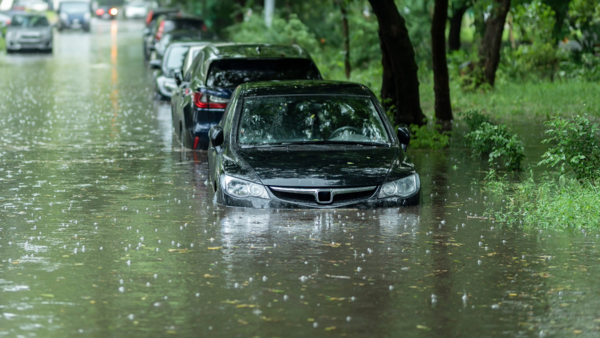Here are five practical steps to help you identify a flood-damaged car instantly:
• Check for Musty Odours
• Inspect the Carpets and Upholstery
• Examine the Electrical Systems:
• Inspect the Engine Compartment
• Verify the Vehicle History Report

1. Check for Musty Odours:
Begin your inspection by entering the vehicle and taking a deep breath. A distinct musty or a moldy odours is a red flag indicating water damage. Floodwaters can seep into the interior of a car, leaving behind a persistent smell that is hard to mask.
2. Inspect the Carpets and Upholstery:
Examine the carpets and upholstery for signs of water damage. discolouration, water stains, or a damp feel are indicators that the car has been exposed to flooding. Lift the carpets if possible, checking for silt, mud, or water residue underneath.
3. Examine the Electrical Systems:
Flood damage can wreak havoc on a vehicle’s electrical systems. Test all electronic components, including lights, power windows, air conditioning, and the stereo. Malfunctions, erratic behaviour, or persistent issues could be evidence of water damage affecting the electrical components.
Dubai turns Mecca for Porsche fans, Mission X, Vision 357 and more: Icons of Porsche 2023 | TOI Auto
4. Inspect the Engine Compartment:
Pop the hood and inspect the engine compartment for signs of water intrusion. Check for mud or silt deposits, as these can indicate that the car has been submerged. Additionally, examine the engine fluids, milky or discoloured oil and transmission fluid may suggest water contamination.
5. Verify the Vehicle History Report:
Obtain a comprehensive vehicle history report using the car’s vehicle identification number (VIN) or chassis number. These reports compile information from various sources, including insurance claims and RTO or Vahan records. Look for any mentions of flood damage or salvage titles, as these are clear indicators of a compromised vehicle.
In conclusion, with the increase in extreme weather events, the risk of flood-damaged cars entering the market has gone up substantially. Used car buyers must exercise due diligence to avoid purchasing vehicles with hidden water damage to protect their investment. The above mentioned steps can help consumers make an informed decision and protect themselves from the potential pitfalls associated with flood-damaged vehicles.

